Pearlman Cabin by John Lautner is an organic Californian mountain retreat
John Lautner’s midcentury Pearlman Cabin, tucked away in the Californian mountain resort of Idyllwild, is a striking example of organic architecture
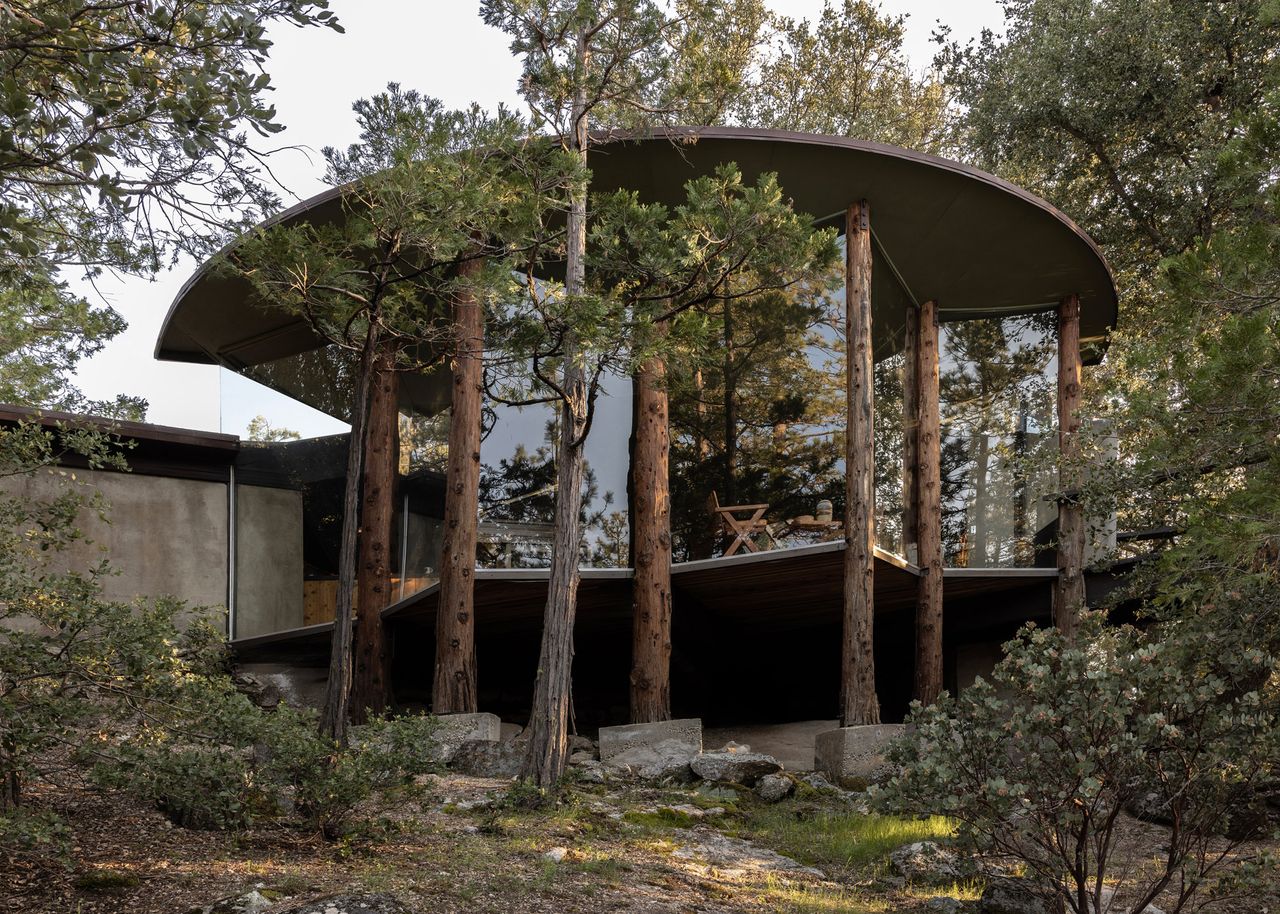
Nancy Pearlman is many things: radio personality, environmentalist, dancer and storyteller. Chief among these is passionate host. On occasional days throughout the year, she opens the doors to her family’s midcentury modern cabin to friends, architecture enthusiasts, artists and hikers she met on the trails in the surrounding San Jacinto Mountains. Located in Idyllwild, a resort town 5,000ft above Palm Springs, the home was designed by architect John Lautner for her parents, Dr Carl Kenneth and Agnes Branch Pearlman, as a holiday retreat.
Visitors must wind their way up vertiginous hillside roads that are not for the faint of heart until they reach the cabin, tucked amid tall pine trees and chaparral. Inside, Pearlman rewards them for their trouble with a large table laden with a smörgåsbord of eats. Cheeses, spinach dip, hummus, banana bread, wine and hard-boiled eggs cover the entire surface. It’s far more food than the 17 people assembled could possibly consume, but the antique table (and its abundance of food) is important. Her parents would always put out a spread for guests, and her gracious welcome and food offering honours their legacy.
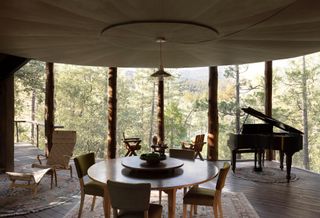
The open-plan living space features a circular plywood ceiling and panes of glass inserted directly into the cedar poles. The Pearlmans were talented musicians so the cabin was designed to have excellent acoustics
Enter the Pearlman cabin
Perched on a boulder-strewn slope, the cabin is circular, almost yurt-like in plan. Plaster walls punctuated with a dashed line of curtained windows shield the home from the road, but rotate 180 degrees and the room opens up to a panoramic view of Jean Peak in the San Bernardino National Forest. The enclosure dissolves into a zigzag of frameless panes that span between the cedar poles used as support structure. The roof emphasises the view, sloping downwards on the uphill side, then, thanks to a hidden steel truss, cantilevers upwards.
Architectural slights of hand are at play. For example, the large windows are not angled vertically. If they appear that way, it may be an illusion caused by the unusual profile of the ceiling. Rough-hewn columns not only support the roof, they blend in with the view of oaks, cedars and pines just beyond the glass. (You can see the wood for the trees.) For scholars and fans of Lautner’s experimental designs, it’s an ideal example of the style known as ‘organic architecture’.
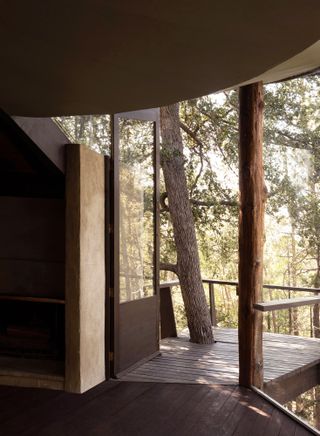
A small wedge-shaped deck has a hole in the middle to preserve an existing tree
‘There are many definitions and interpretations of organic architecture: using organic materials, designing with natural geometries, or connecting man to nature,’ says Alan Hess, who wrote a book on the subject. ‘There is also the concept of a building growing from a seed into a complete expression. Roots, trunk, leaves – all relate to one organic whole. When you are inside the Pearlman Cabin, the structural columns relate directly to the forest, erasing the line between inside and outside.’
Finished in 1957, the cabin is modest by Lautner standards: just the great main room and a side wing for the bathroom and a small bedroom. Bill Branch, Agnes Pearlman’s brother, did most of the construction, working directly off the blueprints. (He made one detour from the original plans, enlarging a storage room so that it could be used as a bedroom.) Not much has changed over the decades. The open kitchen still has its light pink stove with built-in sink. The painted wood floor is strewn with decorative rugs, although the original Navajo ones were stolen. It is a place that is well-loved without being preciously preserved.
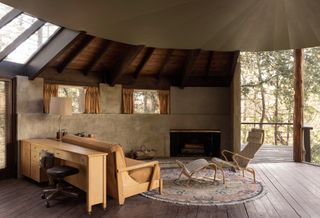
The lounge area features a custom-made desk and a Bruno Mathsson 1960s ‘Pernilla’ chair
Hess notes that the home was built during the period when the architect’s practice was still emerging. At the time, Lautner mostly designed middle-class suburban houses, not the spectacular concrete edifices that defined his later career, such as Silvertop in LA or Arango House in Acapulco, which could be mistaken for supervillains’ lairs.
Wallpaper* Newsletter
Receive our daily digest of inspiration, escapism and design stories from around the world direct to your inbox.
While the Pearlman Cabin predates his more famous circular projects, Chemosphere (1960) and the Zimmerman Residence (1968), you can sense Lautner’s design mind furiously working out the details and trying to figure out how to place elements such as the kitchen, fireplace and built-in desk around the radius of the circle. Hess recalls a quote by architecture critic Esther McCoy, who praised Lautner: ‘His houses are thorny with ideas, ideas that wake up the eye and astonish the mind.’
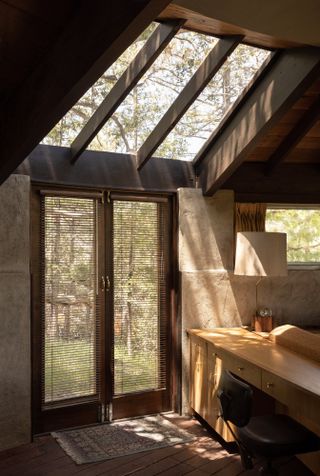
The side door and its skylight are designed to frame a large oak tree
And yet, there are other stories to tell about the house’s origins. Pearlman regales guests with commentary from the home’s history and her life. For all the interest in Lautner’s architecture, she flags to guests that the genesis of the architect’s scheme
lies with her mother, who had the vision of a round table in the centre of a circular,
one-room cabin. Agnes’ West Virginia roots influenced their decision to build in the mountains, as did Agnes and Carl’s connection to the nearby Idyllwild Arts summer family camp. To avoid building an A-frame or square log cabin, she drew upon her knowledge of midcentury modern architecture. ‘Lautner gets all the credit, but Mom had the concept of the round house. She found the ‘unbuildable’ plot with the view and collaborated with Lautner,’ she says.
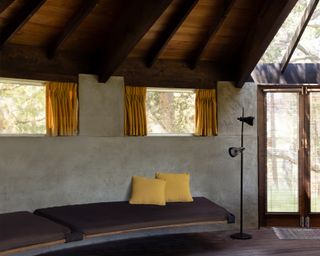
Lined up against the curved stucco wall that encloses two-thirds of the cabin’s perimeter are a pair of built-in beds (the only ones originally planned for the house)
Agnes lived in New York City for a year to study interior design before she married. Later, she and her husband, a urologic surgeon, moved to Santa Ana, California, to raise their two young children. Both enjoyed the arts and cultural events, and were active philanthropists for many progressive causes, in areas such as health, the environment and civil rights. So when it came to designing their Idyllwild cabin, Agnes wanted to hire a modern architect. ‘She was referred to Lautner because he was just getting started and they felt, as a protégé of Frank Lloyd Wright, that he could create her vision.’
The home’s shape makes it the perfect place for music – it resonates like an instrument. ‘The acoustics in here are stunning,’ notes Pearlman. The family would host concerts, with Agnes sitting at the piano and Carl standing, violin tucked under his chin. Pearlman keeps two portraits of her parents next to the piano and you can almost imagine them performing for their children and friends. Behind them, pine trees and mountain crags unspool into the distance.
-
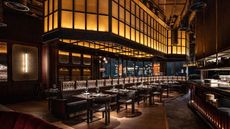 Gordon Ramsay Restaurants are taken to new heights with three openings in one of London’s tallest buildings
Gordon Ramsay Restaurants are taken to new heights with three openings in one of London’s tallest buildingsGordon Ramsay Restaurants open at 22 Bishopsgate, from Asian-inspired cuisine and martini menus at Lucky Cat and Lucky Cat Bar; to an intimate chef's table, and an all-skill level cooking academy
By Tianna Williams Published
-
 Wallpaper* Design Awards 2025: the make-up collections defining contemporary beauty
Wallpaper* Design Awards 2025: the make-up collections defining contemporary beautyThe beauty winners of the Wallpaper* Design Awards 2025, selected by beauty editor Hannah Tindle, include playful and eclectic make-up collections by Hermès, Celine, Dior, Chanel and Prada
By Hannah Tindle Published
-
 Don't miss these seven artists at Frieze Los Angeles
Don't miss these seven artists at Frieze Los AngelesFrieze LA returns for its sixth edition, running 20-23 February, showcasing over 100 galleries from more than 20 countries, as well as local staples featuring the city’s leading creatives
By Annabel Keenan Published
-
 The 10 emerging American Midwest architects you need to know
The 10 emerging American Midwest architects you need to knowWe profile 10 emerging American Midwest architects shaking up the world of architecture - in their territory, and beyond
By Ellie Stathaki Published
-
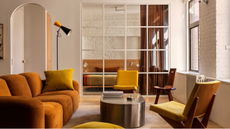 A light-filled New York loft renovation magics up extra space in a deceptively sized home
A light-filled New York loft renovation magics up extra space in a deceptively sized homeThis New York loft renovation by local practice BOND is now a warm and welcoming apartment that feels more spacious than it actually is
By Léa Teuscher Published
-
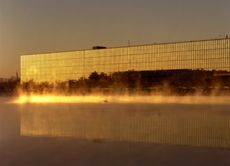 Inside Bell Labs, the modernist vision behind Severance's minimalist setting
Inside Bell Labs, the modernist vision behind Severance's minimalist settingWe explore the history of Bell Labs - now known as Bell Works - the modernist Eero Saarinen-designed facility in New Jersey, which inspired the dystopian minimalist setting of 'Severance'
By Jonathan Bell Published
-
 Zaha Hadid Architects’ new project will be Miami’s priciest condo
Zaha Hadid Architects’ new project will be Miami’s priciest condoConstruction has commenced at The Delmore, an oceanfront condominium from the firm founded by the late Zaha Hadid, ZHA
By Anna Solomon Published
-
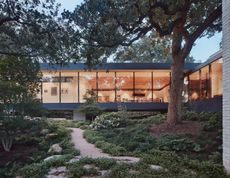 A West Austin house invites you to commune with nature
A West Austin house invites you to commune with natureWestview Residence by Alterstudio, a West Austin house among trees, makes the most of large windows and open-air decks in a verdant setting
By Ellie Stathaki Published
-
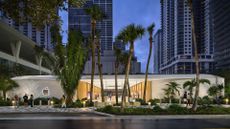 Apple’s new Miami store employs the principles of biophilic design
Apple’s new Miami store employs the principles of biophilic designApple’s first mass-timber store connects shoppers to nature while echoing the Art Deco architecture of Miami
By Anna Solomon Published
-
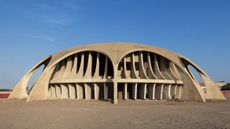 The World Monuments Fund has announced its 2025 Watch – here are some of the endangered sites on the list
The World Monuments Fund has announced its 2025 Watch – here are some of the endangered sites on the listEvery two years, the World Monuments Fund creates a list of 25 monuments of global significance deemed most in need of restoration. From a modernist icon in Angola to the cultural wreckage of Gaza, these are the heritage sites highlighted
By Anna Solomon Published
-
 Reflections from Los Angeles: a local writer's personal account of the LA fires
Reflections from Los Angeles: a local writer's personal account of the LA firesArchitecture writer and local resident Michael Webb reflects on the devastating 2025 Los Angeles fires and offers his personal account of the events of the last two weeks in California
By Michael Webb Published